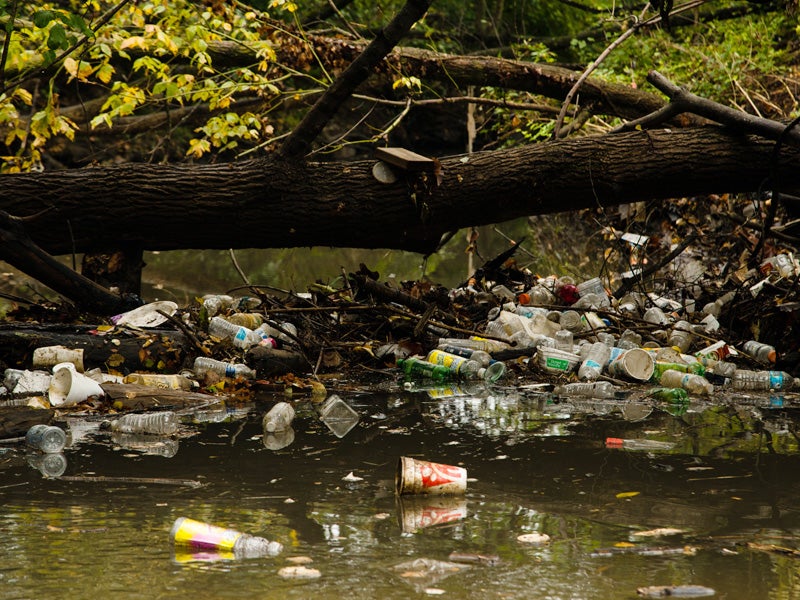Court Finds That Maryland Failed to Protect Rivers From Pollution
Maryland Appeals Court rules that the state's environmental regulators failed to curb pollution in waterways that flow through the state.

This page was published 10 years ago. Find the latest on Earthjustice’s work.
Last Thursday, the Maryland Court of Special Appeals, the second highest court in the state, ruled that the state’s environmental regulators are breaking the law by failing to clean up stormwater pollution in Montgomery County.
Stormwater is one of the biggest water pollution problems throughout Maryland, especially in the Washington, D.C., and Baltimore regions. When it rains or snow melts, water enters the storm sewers and is dumped into our rivers, carrying untreated sewage and heavy loads of contaminants straight into the waterways. Stormwater is full of toxic metals, oil, grease, pesticides, herbicides, bacteria and water pollutants. Urban stormwater runoff is one of the top sources of contaminants polluting the area’s rivers, creeks and streams, nearly all of which flow into the Chesapeake Bay.
The state Department of the Environment is the agency charged with issuing mandatory permit limits to clean up this stormwater pollution, and the court found that the state’s permit was unlawfully vague, unenforceable and ineffective.
Specifically, here were the permit’s problems:
- The state refused to impose enforceable limits.
Instead of imposing clear limits on pollution discharges, the permit required the county to develop and submit unenforceable “implementation plans” describing the activities the county intended to undertake. The permit also lacked compliance schedules for achieving pollution reductions, allowing the county’s implementation plans to stretch for decades.
- The state’s process lacked public participation in setting deadlines and limits.
The citizen’s role in enforcing the Clean Water Act, including the ability to challenge permits in court, and to bring citizen enforcement actions, has been one of the defining hallmarks and most successful aspects of our national clean water law. The Clean Water Act guarantees that no one is above the law.
- The state was relying on inadequate monitoring and failing to set compliance timetables.
The permit required water quality monitoring in only one location in the entire 500 square-mile county. This made it difficult, if not impossible, to ever hold the state agency or the county accountable.
To control stormwater runoff, states require their counties or cities to take a number of steps to reduce the toll of stormwater on our waterways. Some urban areas have basic old-fashioned systems designed to filter the runoff of plastics, debris and trash before getting to the rivers and waterways. But these outdated systems need to be upgraded to filter out major contaminants, bacteria and chemicals. Regulators also can come up with inventive ways to use green space and urban gardens to naturally soak up and filter storm waters, and build green infrastructure projects to prevent polluted stormwater from flowing into their waterways. Cities across the country have done great work in protecting their clean waters for fishing, swimming, and drinking water by taking a variety of these steps.
Clearly there are plenty of ways to clean up stormwater pollution, but despite nearly two decades under the state agency’s watch stormwater pollution from Montgomery County’s storm sewers continues to foul our local streams.
We brought this case on behalf of a coalition of concerned local and national watershed advocates—Anacostia Riverkeeper, Potomac Riverkeeper, Waterkeeper Alliance, Friends of the Earth, and local river advocates Mac Thornton and Pat Muniz—who have been watching the water quality in the rivers and streams in the area worsen over the years due to these persistent and unaddressed stormwater pollution problems. After the state refused to define specific pollution caps and deadlines for meeting them in the permit, instead ordering the county to engage in a protracted planning process and allowing the county to continue relying on outdated and unproven pollution control practices, we brought this legal case.
This latest decision upholds a December 2013 ruling by the Montgomery County Circuit Court that also sided with the advocates, saying that the permit’s requirements were “simply too general.” The decision confirms that the Maryland Department of Environment has wasted millions of Maryland taxpayer dollars on ineffective and unenforceable permits that fail to protect our beloved waterways and the nationally treasured Chesapeake Bay.
It is time for the state to meet its legal duty to establish the pollution limits so desperately needed to protect the waters in which we swim, fish, boat and enjoy. We urge the Maryland Department of Environment to go back to the drawing board to develop effective and enforceable pollution limits that will ensure clean and safe rivers for Maryland’s residents and visitors.
Earthjustice’s Washington, D.C., office works at the federal level to prevent air and water pollution, combat climate change, and protect natural areas. We also work with communities in the Mid-Atlantic region and elsewhere to address severe local environmental health problems, including exposures to dangerous air contaminants in toxic hot spots, sewage backups and overflows, chemical disasters, and contamination of drinking water. The D.C. office has been in operation since 1978.